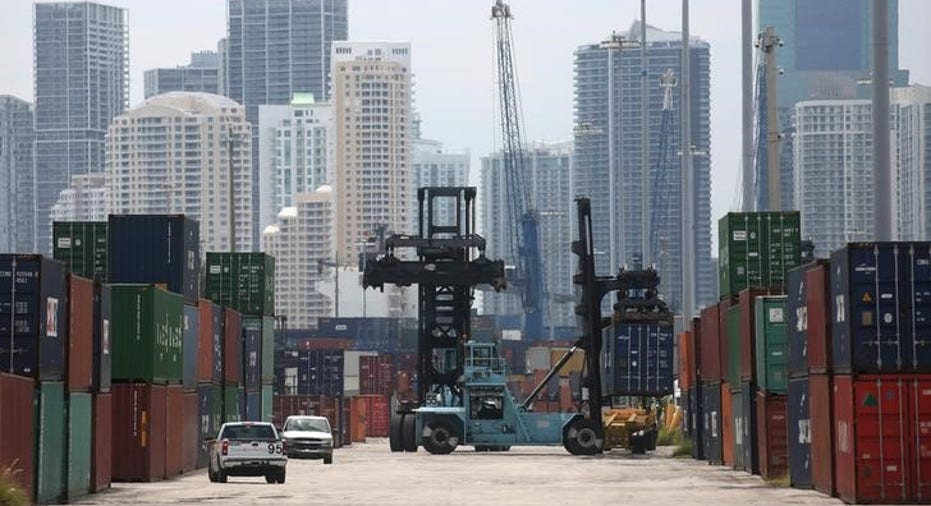U.S. trade deficit rises to near five-year high

WASHINGTON – The U.S. trade deficit jumped to a near five-year high in January as rising oil prices helped to push up the import bill, suggesting trade would again weigh on economic growth in the first quarter.
The Commerce Department said on Tuesday the trade gap increased 9.6 percent to $48.5 billion, the highest level since March 2012. December's trade deficit was unrevised at $44.3 billion.
Economists polled by Reuters had forecast the trade gap rising to $48.5 billion in January. When adjusted for inflation, the deficit rose to $65.3 billion from $62.0 billion in December. Both the inflation-adjusted exports and imports were the highest on record in January.
The wider trade gap added to weak data such as housing starts, consumption and construction spending in suggesting the economy struggled to regain momentum early in the first quarter after growth slowed to a 1.9 percent annualized rate in the final three months of 2016.
The economy grew at a 3.5 percent pace in the third quarter.
Trade slashed 1.7 percentage points from gross domestic product in the fourth quarter. The Atlanta Federal Reserve is forecasting GDP rising at a 1.8 percent rate in the first quarter.
The Trump administration is eyeing trade as it seeks 4 percent annual GDP growth. President Donald Trump has vowed
sweeping changes to U.S. trade policy, starting with pulling out of the 12-nation Trans-Pacific Partnership trade pact.
Trump also wants to renegotiate the North American Free Trade Agreement (NAFTA), which was signed in 1994 by the United States, Canada and Mexico. Economists, however, warn that the America-first or protectionist policies being pursued by the administration are a threat to the country's economic health.
In January, imports of goods and services increased 2.3 percent to $240.6 billion, the highest level since December 2014. Economists say an early Chinese New Year could have pulled forward imports.
The import bill in part reflected higher oil prices. The country imported 259 million barrels of crude oil in December, the largest amount since July 2013. The value of petroleum imports was the highest in two years.
The price of imported oil averaged $43.94 per barrel in January, the highest since August 2015. There were also increases in imports of automobiles, which hit a record high. Cellphone imports also rose.
Imports of industrial supplies and materials were the highest since July 2015, while imports of capital goods were the highest in nearly two years.
Imports of goods from China increased 5.1 percent to $41.4 billion in January, while those from Japan tumbled 13.9 percent to $10.5 billion. The nation saw a 9.2 percent drop in merchandise sourced from Germany.
Exports of goods and services climbed 0.6 percent to $192.1 billion. That was the highest level since December 2014. There were increases in exports of industrial supplies and materials, which hit their highest level since December 2014. Petroleum exports were the highest since May 2015.
A strong dollar remains a constraint to export growth. The dollar gained 4.4 percent against the currencies of the United States' main trading partners last year.
The bulk of the increase in the trade-weighted value of the dollar occurred in the final months of 2016 and will probably take a while to reflect in trade data.
Exports to the European Union fell 7.3 percent, with goods shipped to Germany tumbling 10.7 percent. A Trump trade adviser has accused Germany of unfairly benefiting from a weak euro. Exports to China, also singled out by the Trump administration, dropped 13.4 percent.
The politically sensitive U.S.-China trade deficit increased 12.8 percent to $31.3 billion in January, while the trade gap with Germany fell 8.0 percent to $4.9 billion. The United States also saw its trade deficit with Mexico drop 10.1 percent to its lowest level since July 2015.
(Reporting By Lucia Mutikani; Editing by Andrea Ricci)



















